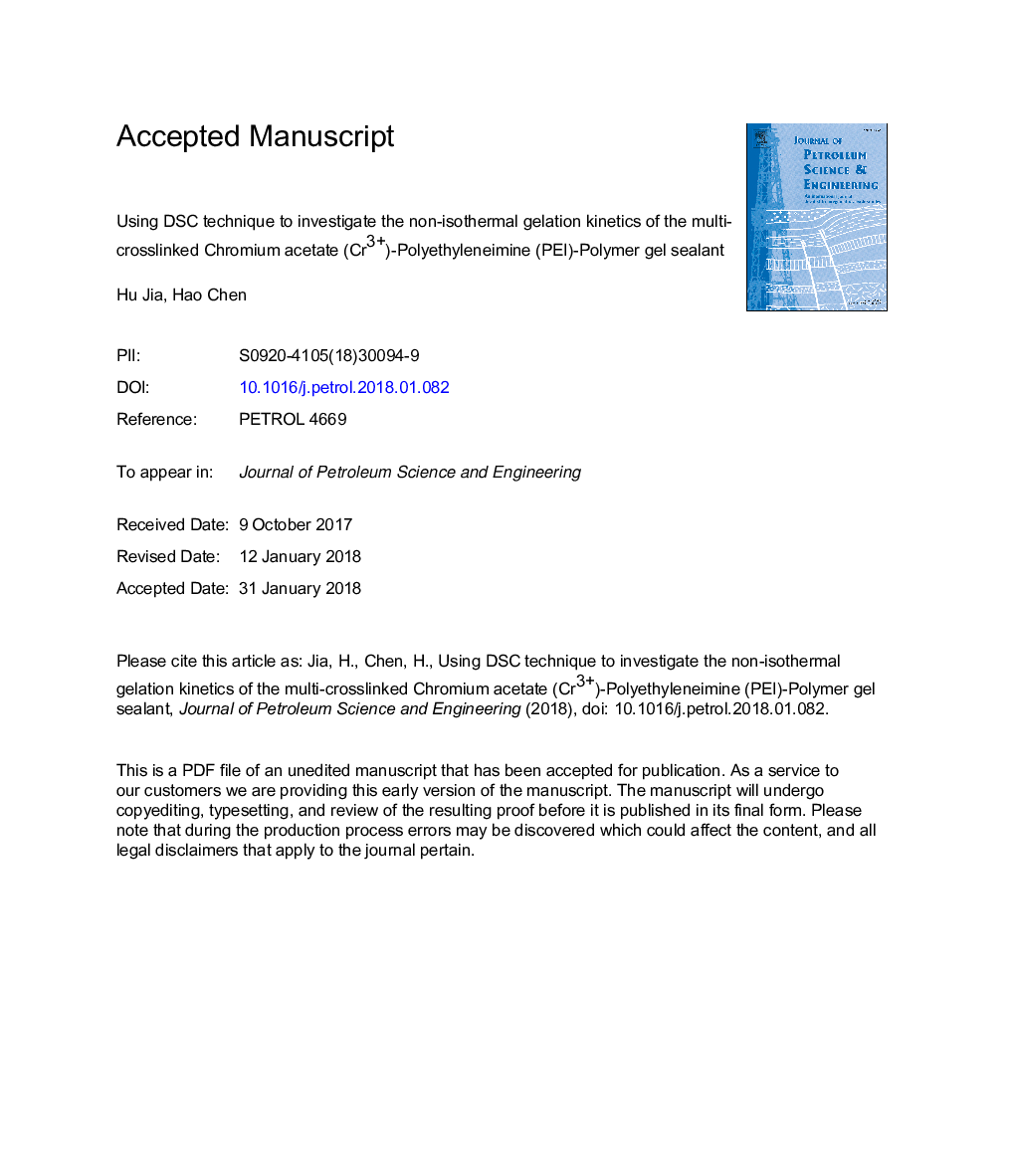| Article ID | Journal | Published Year | Pages | File Type |
|---|---|---|---|---|
| 8124987 | Journal of Petroleum Science and Engineering | 2018 | 33 Pages |
Abstract
Polymer gel based on multi-crosslinking is aroused great interesting in the aspect of oil/and or gas well water shutoff and temporary plugging in well completion and workover. While the complex gelation mechanism is not well understood. Most previous studies focus on using a coarse method such as rheological techniques or simple bottle test to investigate the gelation kinetic. This work presents the first attempt to use the DSC technique to study the non-isothermal gelation kinetic of the multi-crosslinking gel system. The target polymer gel is reported in our previous study, which is a multi-crosslinked Cr3+-PEI-SPAM gel. The DSC curve shows an endotherm peak followed by an exotherm peak, indicating the multiple reactions taken place during the heating of Cr3+-PEI-SPAM gel system. The endothermic process shows that the first gelation reaction occurs between the SPAM and Cr3+. And the exothermic process can be regarded as the secondary gelation reaction between the SPAM and PEI. Non-isothermal gelation kinetic parameters were determined by Jeziorny model, Mo's model and Rate model, respectively. All results show a good linear relationship with the experimental data. The non-isothermal gelation kinetic parameters from the Jeziorny model indicate that the gelation mechanism between Cr3+-SPAM and PEI-SPAM is very different. The results of Mo's model show that the gelation process becomes difficult as the gelation progresses. Non-isothermal gelation kinetic parameters calculated from the Rate model indicate that the crosslinking between SPAM and Cr3+ is a multistage reaction including three stages, while the crosslinking between SPAM and PEI only has two stages.
Related Topics
Physical Sciences and Engineering
Earth and Planetary Sciences
Economic Geology
Authors
Hu Jia, Hao Chen,
